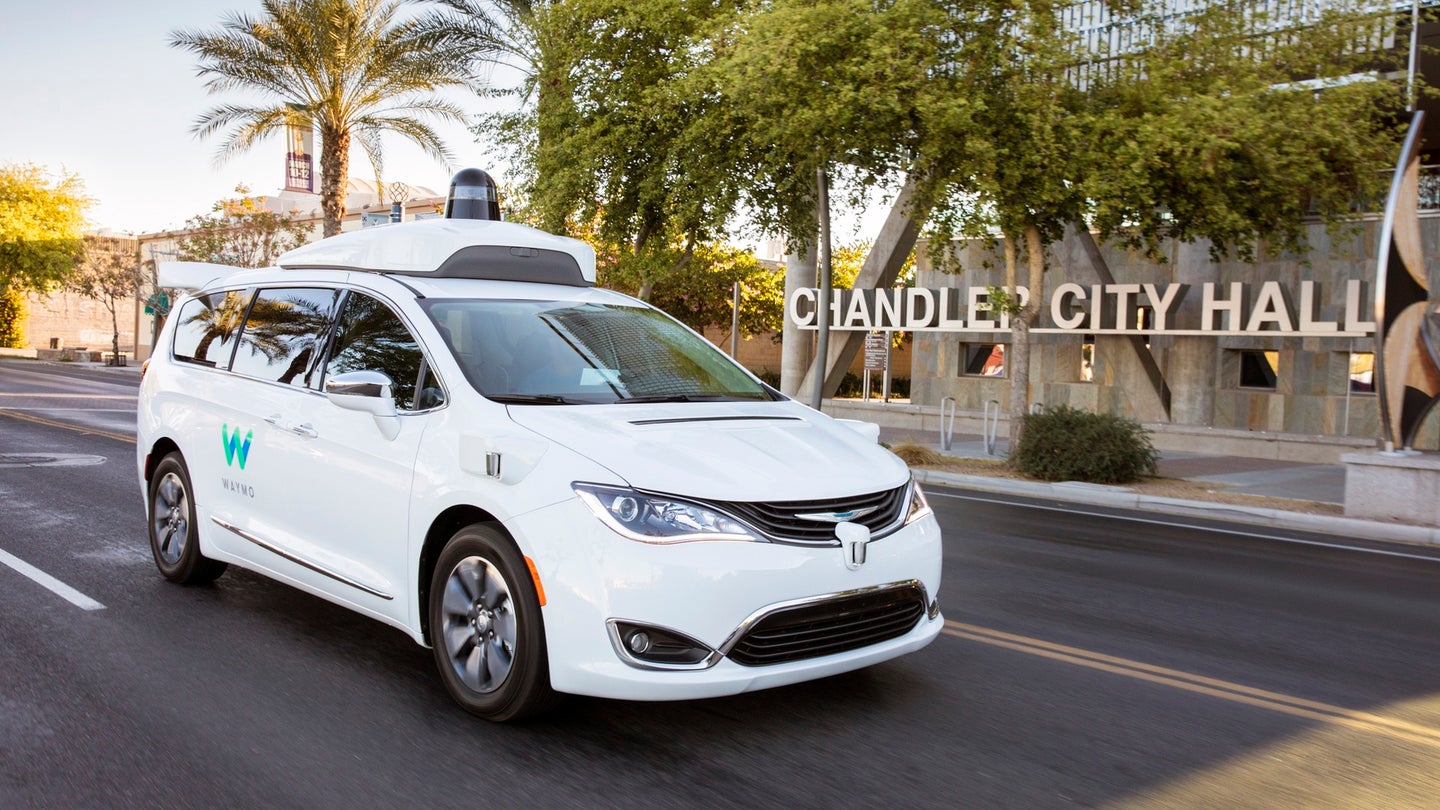Waymo Releases Guidelines for Autonomous Vehicle Tech Crash Response
The document from Google’s self-driving technology division is intended as an educational resource for rescue workers and law enforcement.

Autonomous vehicle developer Waymo recently published a document titled "Waymo Fully Self-Driving Chrysler Pacifica Emergency Response Guide and Law Enforcement Interaction Protocol." The 36-page guide provides rescue workers with information that may prove to be vital in the event of a crash involving one of the company's modified Chrysler Pacifica Hybrids that are currently being used for development and testing in select areas across the United States.
The document first tells law enforcement about identifying information that sets a Waymo Pacifica apart from any other vehicle, the van's roof-mounted sensors being a primary indicator. Each Waymo vehicle also has a unique serial number placed on the upper-right of its front and rear windows. The release then lays out the vehicle's capabilities. The van has been rated by Waymo to have full self-driving tech for use on public roads at speeds of up to 65 miles per hour.
The Pacifica's autonomous technology features are currently limited in cases of severe weather, and its not capable of self-driving tech off-road or across twisty mountain passes. These factors give the Waymo Pacifica an SAE autonomy rating of level 4, otherwise known as "High Automation." No current vehicle has achieved the SAE level 5 rating, which would require the car to be able to operate itself in any driving condition without human involvement.
Information is then given for rescue workers on how to enter the vehicle, disable semi-autonomous features, and cut power to the hybrid system if need be. Waymo makes it clear that the car will not engage its self-drive technology if an airbag has been deployed, a door is currently open, the transmission is set to park, or if the parking brake is engaged. If responders have to move the vehicle themselves, they should first contact Waymo to completely deactivate the self-driving tech.
With semi-autonomous features disengaged, rescue workers should treat the Waymo vehicle as they would any other Pacifica Hybrid. The van's high voltage battery presents additional fire and electrocution risks compared to a car with a standard internal combustion engine. As a result, firefighters and police officers must take extra precautions when dealing with damaged electric vehicles and hybrids.
As Waymo expands its test fleet, and as other companies develop self-driving technology platforms of their own, it can unfortunately increase the risk of crashes involving semi-autonomous vehicles. It's imperative for officers in the areas that these vehicles operate to be aware of the challenges that may come in the aftermath of these crashes. It's especially important for responders to know how to switch off autonomous tech features, as a damaged vehicle trying to move under its power could turn a tough situation into something worse.
